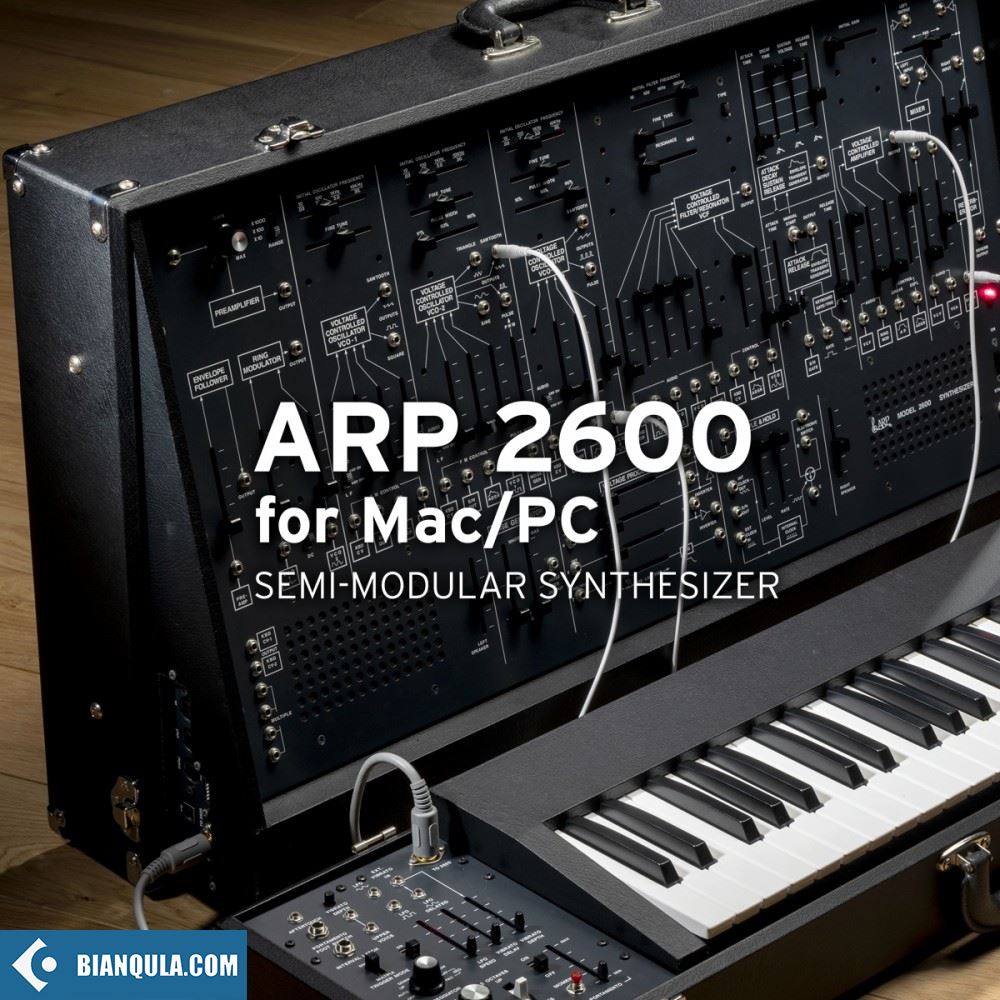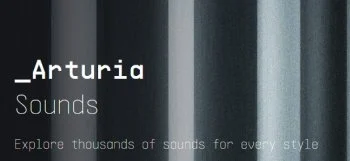KORG Software ARP 2600 v1.0.1 Mac

MORiA | STANDALONE | AUi | VST3i | 1022.7 MB
唯一的ARP 2600。标志性的ARP 2600。这是一个你可以期待在每个主要工作室看到的合成器。他们在二手市场上要价很高。当香港在2020年发布限量版ARP 2600 FS时,它们立即在全球销售一空。现在,KORG很高兴地介绍了第一个真正准确的软件重建这个重要的合成器:KORG集合ARP 2600。
KORG的专有CMT技术忠实地再现了独特的波形和滤波器,自定义LFO和包络形状,许多微妙的非线性,甚至是贴片板的行为-不像任何其他2600软件仪器。由于这种对细节的痴迷,你可以打开原始的ARP 2600补丁书(在KORG的网站上以免费的PDF格式提供),将屏幕上的100个补丁中的每一个连接起来,它们听起来就像一个真正的ARP 2600 -这是其他2600插件无法做到的。
把2600年带入现代
保留美妙的音质,令人难以置信的灵活性和古怪的态度,原来只是一个开始。为了真正纪念这款传奇乐器的遗产,我们问自己:如果ARP在今天重新设计2600,它会是什么样子?作为回应,我们做了许多改进,包括增加了第二个滤波器,驱动器部分,新的调制源,广泛的MIDI控制,一个复杂的音序器,多达16个声音的复调,以及更多-所有这些都保持了原始ARP 2600设计的精神。
细节之美
我们的工程师花了相当多的时间来理解原始和现代原理图的每个细节,仔细阅读原始2600手册,用示波器进行测试,最重要的是倾听。例如,最初的AR和ADSR信封可能看起来很简单,但需要花费大量时间和调整才能使它们恰到好处。振荡器波形是正确的,包括轻微的缺陷,增加了一个独特的亮度(特别是三角形和正弦)。我们对两个原始VCF模块4012和4072进行了建模,并使用开关在它们之间进行选择。我们在原始硬件上加入了所有的饱和点,用微妙的扭曲来给声音带来生命。广泛的抗混叠技术遍布不同的模块,让我们提供真正优质的音频质量。KORG的组件建模技术(CMT)包括模拟组件之间的变化,就像您在多个硬件2600中发现的那样,在播放复音时提供自然的丰富性。
在配片面板之外,有20多个修剪盆可以在2600个不同年份的行为之间进行选择,拨号校准细节,如方波宽度和三角波对称性(就像原始硬件一样)等等。
保存和扩展2600精神
甚至比大多数老式合成器,2600有自己的特点。首先,没有两个部分是相同的;每个都有自己的目的(通常不止一个)和匹配的能力。三个vco各有不同的特性。这两种信封的工作原理非常不同。有许多隐藏的怪癖,例如外观相同的控制输入的不同范围,相位反转和不寻常的波形。这是一款经过精心设计的乐器,但它也给人一种定制模块的感觉。这些差异引导着眼睛,也只是让它变得有趣。有一种不断发现的感觉,“哇,我也可以做到!”
在添加所有新功能时,我们决心保留原始仪器的精神。因此,我们抵制了统一和规范的现代冲动。每个vco仍然是不同的。当我们添加信封和LFO时,我们确保它们与原始声音不同,使新声音成为可能,而不仅仅是“更多”。当我们添加第二个过滤器时,我们使它与主VCF完全不同。每个新功能都有自己的声音。所有的添加都有合理的规范化连接,包括新的LFO,包络和音序器。
我们还保留了所有的原始仪器的控制,甚至与所有的补充,我们保留了基本的布局。如果你熟悉旧的2600,或香港的新2600 FS和2600 M,你会觉得很自在-但有更多的玩。
The one and only ARP 2600. The iconic ARP 2600. It’s the one synth you can expect to see in every major studio. They demand astronomical prices on the second hand market. When KORG released the limited- edition ARP 2600 FS in 2020, they sold out immediately world-wide. Now, KORG is pleased to present the first truly accurate software re-creation of this essential synthesizer: the KORG Collection ARP 2600.
KORG’s proprietary CMT technology faithfully reproduces the distinctive waveforms and filters, the custom LFO and envelope shapes, the many subtle nonlinearities, even the behavior of the patch panel – unlike any other 2600 software instrument. Thanks to this obsessive attention to detail, you can open the original ARP 2600 Patch Book (available as a free PDF on KORG’s website), hook up each of the 100 patches on screen, and they will sound just like an authentic ARP 2600 – something that no other 2600 plug-in can do.
Bringing the 2600 into the modern age
Preserving the fantastic sound quality, incredible flexibility, and quirky attitude of the original was only the beginning. To truly honor the legacy of this legendary instrument, we asked ourselves: if ARP redesigned the 2600 today, what would it be like? In response we made many improvements, including adding a second filter, a drive section, new modulation sources, extensive MIDI control, a sophisticated sequencer, up to 16-voice polyphony, and much more – all while keeping the spirit of the original ARP 2600 design.
Beauty in the details
Our engineers spent considerable time understanding every detail of the original and modern schematics, poring over the original 2600 manuals, testing with oscilloscopes, and most importantly listening.The original AR and ADSR envelopes, for example, might seem simple – but it took a lot of time and tweaking to get them just right. The oscillator waveforms are correct, including the slight imperfections that add a unique brightness (especially for the triangle and sine). We modeled both of the original VCF modules, the 4012 and the 4072, with a switch to select between them. We included all of the many saturation points on the original hardware, with subtle distortions that bring life to the sound. Extensive anti-aliasing techniques spread throughout the different modules let us deliver truly premium audio quality. KORG’s Component Modeling Technology (CMT) includes variations between analog components, just as you’d find with multiple hardware 2600s, to deliver natural richness when playing polyphonically.
Outside the patch panel, there are 20-odd Trim Pots to select between behaviors of different 2600 vintages, dial in calibration details such as square wave width and triangle wave symmetry (just like the original hardware), and more.
Preserving and expanding the 2600 spirit
Even more than most vintage synths, the 2600 has a character all its own. To begin with, no two sections are alike; each has its own purpose (often more than one) and capabilities to match. Each of the three VCOs has different features.The two envelopes work very differently. There are many hidden quirks, such as different ranges for identical-looking control inputs, phase inversions, and unusual waveforms. It’s a carefully considered instrument, but it also feels like a collection of bespoke modules. The differences guide the eye, and also simply make it fun to play around with. There’s a constant sense of discovery, of “wow, I can make it do that, too!”
When adding all of the new capabilities, we were determined to preserve the spirit of the original instrument. So, we resisted the modern urge to unify and standardize. Each of the VCOs is still different. When we added an envelope and an LFO, we made sure that they were different from the originals, enabling new sounds instead of just “more.” When we added a second filter, we made it entirely different from the main VCF. Each new feature speaks with its own voice. All of the additions have sensible normalled connections, incorporating the new LFO, envelope, and sequencer.
We also kept all of the controls of the original instrument, and even with all of the additions, we preserved the basic layout. If you’re familiar with the old 2600, or KORG’s new 2600 FS and 2600 M, you’ll feel right at home – but with even more to play with.





